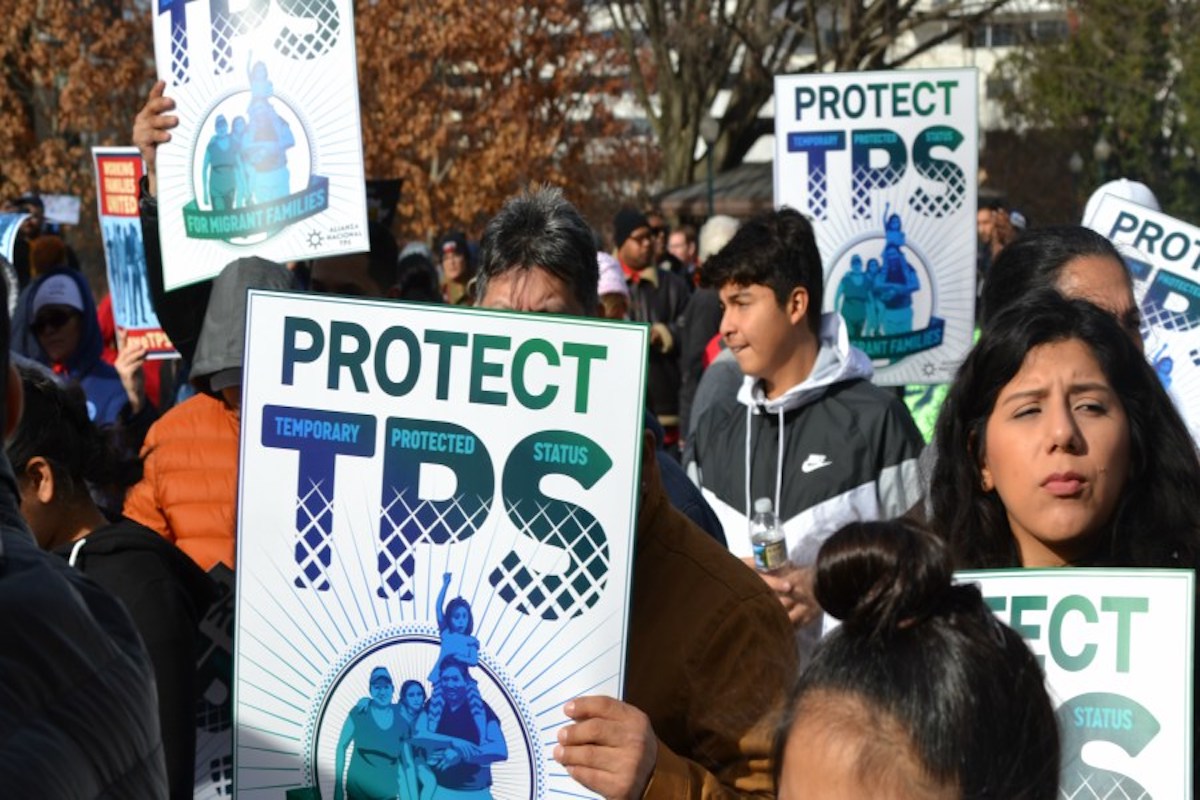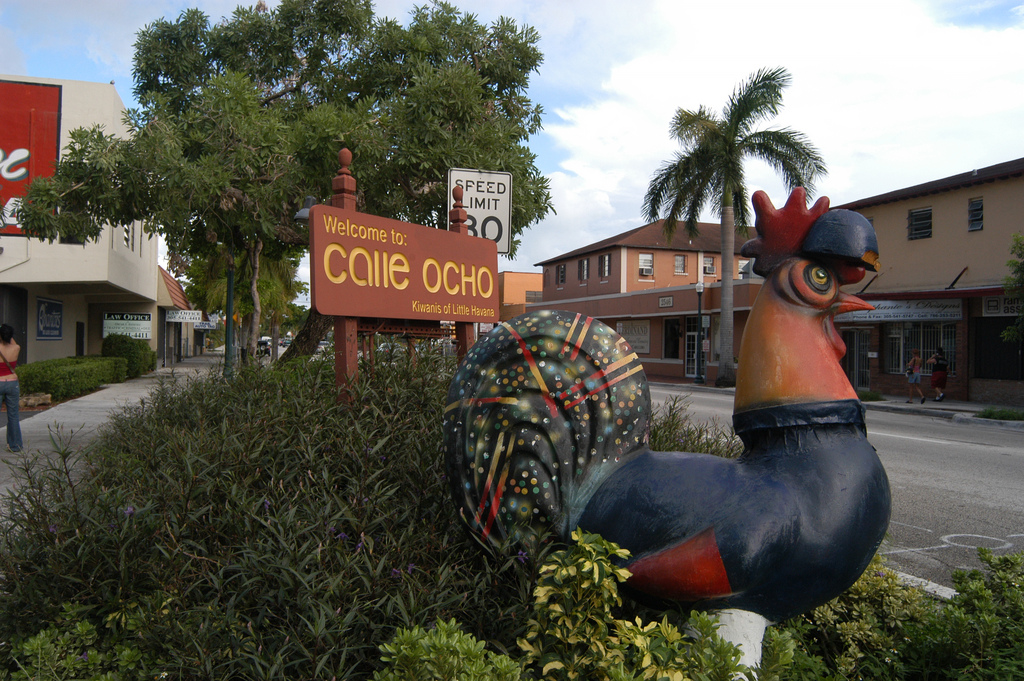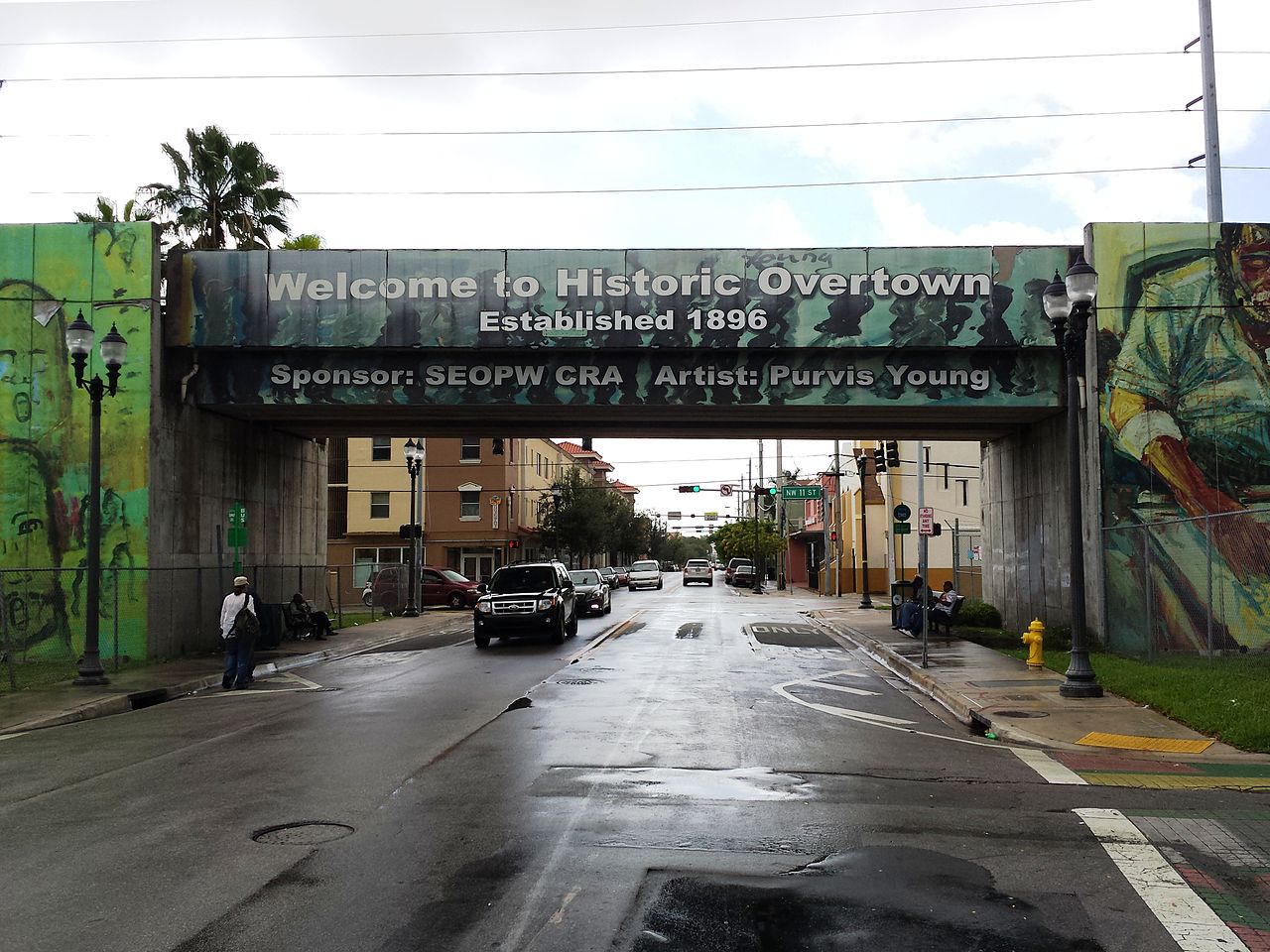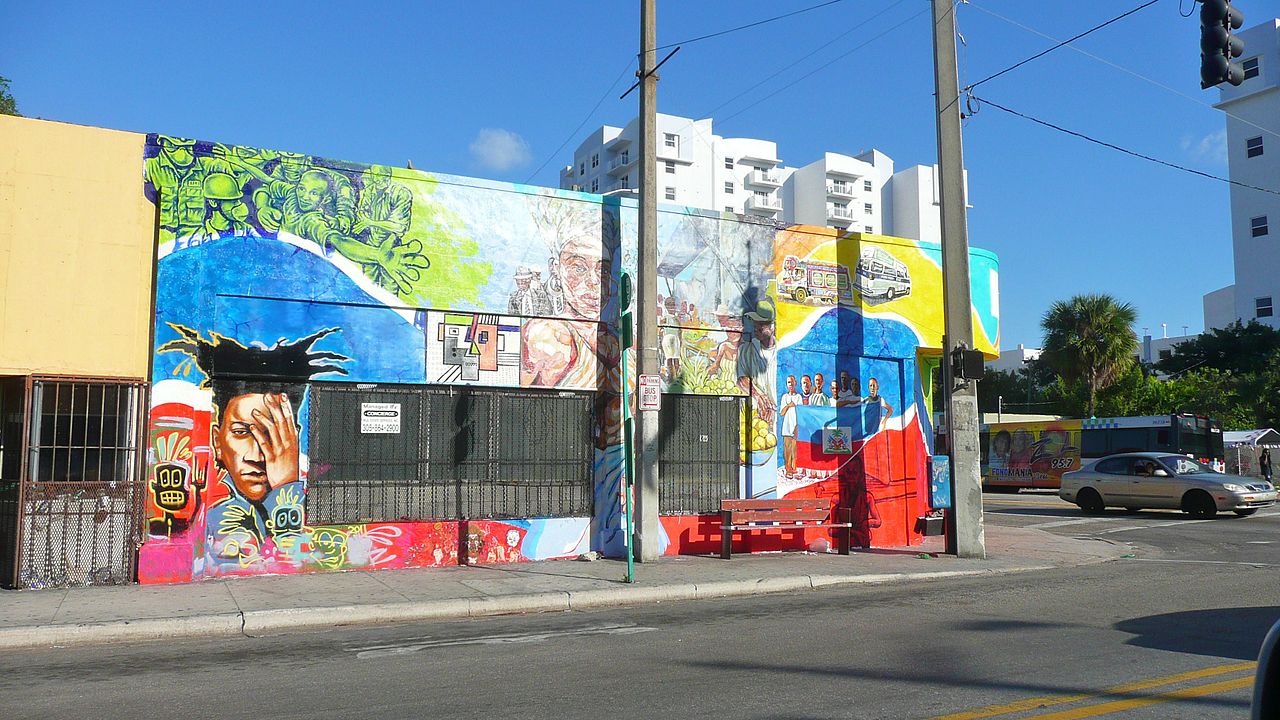From our nation’s founding, state and federal laws have either stacked the deck for or against Americans of diverse racial and ethnic origin. In their new report, “The Color of Wealth in Miami,” Alan A. Aja, Gretchen Beesing, Daniel Bustillo, Danielle Clealand, William Darity, Jr., Darrick Hamilton, Mark Paul, Anne E. Price, and Khaing Zaw demonstrate how these policies, written in black and white, have concentrated wealth in the hands of white Americans to the detriment of people of color.
“The Color of Wealth in Miami,” the fourth in a series, sheds light onto how policy makers create winners and losers among the people in the great American experiment from its earliest days. The authors document the wealth and asset position disparities of communities of color in relation to their white counterparts. The data begs the question as to how these disparities have come to be and raise difficult questions about the intersection of debt with questions of race, ethnicity and legal status. By attempting to answer these questions, the authors help us arrive at the consequences of structural and systemic racial discrimination, and wealth extraction of people of color, especially the nation’s black population.
A Brief History of Race, Ethnicity, Immigration and Wealth
Our earliest history shows that Native Americans were forcefully dispossessed of their lands. People of African descent were originally enslaved and sold as chattel property to white landowners prior to gaining citizenship status. These atrocities in our early history set the stage for the advantage and disadvantage reflected in today’s racial wealth gap.
At the founding of the republic, only white male property owners were able to vote and serve in elected office. Everyone else was excluded from participating (U.S. Constitution, Article I, Sec. 2). Enfranchisement was ultimately extended to black men, non-property owner white males, Native Americans, women (although Jim Crow laws prevented women and men of color from voting), and 18-year-olds through various amendments to the U.S. Constitution. This system established the almost perpetual advantages that yield great financial returns for the rule makers and keeps others on a treadmill to nowhere.
Similarly, successive immigrant waves have been discriminated and dispossessed such as Asian communities with the Chinese Exclusion Act of 1882, the internment of Japanese-Americans during World War II, and others.
Then there is the history of the U.S. border crossing Mexicans. Mexican Americans, Mexicans, and other immigrants of Latin American descent continue to face vilification and discrimination today. Meanwhile, descendants of white conquerors designed and continue to put in place laws and policies that cement their power over all other Americans.
While there should be no debate over the history, too often the discussion about the remedy to the racial wealth gap is centered on the ethos that people must “pull themselves by their bootstraps,” should go to school, work hard, play by the rules, and be “responsible” with credit. In the financial services space, the discussion is reduced to financial innovation and financial products. However, the rules are a moving target, always changing. Education, while quite beneficial to those who attain it, is not an equalizer. And financial innovation and debt, even if well underwritten, can never undo historical racial discrimination that results in financial marginalization. Moving forward this situation can only be addressed through bold federal and state laws and policies that create equity of opportunity for all.
Wealth in Miami: How Do Diverse Communities Fare?
The revelations of the Miami report show that laws and policies impact the success of newer immigrants to America in a racialized manner that is parallel to the racial binary the country set from its beginning. The authors look at the asset and wealth positions of the diverse populations in Miami, white residents, black residents, Caribbean blacks residents, Cubans, Puerto Ricans (U.S. citizens by birth), other Latinos, and South Americans. They further disaggregate these ethnic groups into white, black, and other racial categories, common in the U.S. context.
The data disaggregated by race within each ethnic category or national group reveal that “blatinos” (black Latinos and Caribbeans) tend to fare worse than their “whitino” (white Latinos and Caribbeans) counterparts. The findings bring to bear the racial dichotomy so prevalent in the historical context of the United States. Each subgroup shows racialization in the aspects of their financial life covered in the study. Racial assignation further undermines the opportunities that could help newer Americans get a footing in their financial and wealth position. Indeed, the data tell the story of how different policies shape people’s ability to succeed in the U.S. economy.
Concerning median wealth, the U.S. white population remains squarely on top above everyone else by a large margin. They hold total wealth, liquid wealth, have the highest proportion of people with liquid assets, are banked (with savings and checking accounts), have stock ownership, and IRA or private annuity ownership at a higher level than all other groups. They have almost five times as much total wealth as Cubans, who are the most successful of all Americans of immigrant descent and immigrant subgroups in Miami. When compared to the black population, whites have 29 times as much total wealth and 89 times as much total wealth as South Americans. Puerto Ricans are last in a wealth grave of negative equity.
Wealth is the reserves families and individuals can draw upon to acquire more wealth, use during times of financial stress, pay for a child to go to college, start a business, and achieve financial independence. The report tells us that Puerto Ricans in Miami are in a perpetual state of financial stress and close to destitution as any one group can get. South Americans are one paycheck away from homelessness. Black Miamians may be able to pay for a month of average housing cost without the ability to pay for anything else. Other Latinos and Caribbean blacks are almost similarly situated and may be able to pay for four to five months of living expenses with their wealth reserves. Among people of immigrant descent, Cubans are the best positioned to weather financial storms with about 20% of wealth resources as those held by whites, approximately seven to 10 months’ worth of housing expenses.
Liquid wealth is the working capital that families and individuals use to pay for day-to-day expenditures. Looking at the population subgroups through the lens of working capital alone reveals a grim daily reality for black residents of Miami—they only hold $11 on hand. Puerto Ricans are not that better off with $200 on hand. Everyone else keeps an amount of working capital equivalent to a proportion of median wealth. For example, whites keep the equivalent of 10 percent of their median wealth as working capital. Other Latinos hold on to the equivalent of 50 percent. South Americans keep the equivalent of 160 percent while Cubans and Caribbean blacks are the subgroups more closely resembling whites by keeping the equivalent of 14 and 16 percent of their respective median wealth as working capital.
Based on a capitalistic model, households should keep wealth assets other than working capital invested in activities that yield greater returns—wealth assets should be invested and not sit idle. The data show that whites, Cubans, and Caribbean blacks adhere to this financial behavior more than the other population groups.
Do People Choose to Be Poor or Do Circumstances Matter?
While the report does not go into more detail about the circumstances of ethnic subgroups, it raises multiple questions. What is the reasoning behind keeping such a significant proportion of total assets as working capital for those identified as other Latinos and South Americans? Could it be that these households have such low incomes compared to their financial needs that their total wealth is a proportion of their working capital needs? Is it possible that immigrant subgroups’ sense of financial vulnerability and poverty is such that they keep their money under the proverbial mattress? Could this be an intersection of household finances and the lack of legal status for householders? Or, are these households subsidizing families in their countries of origin and therefore using liquid wealth to send remittances to other countries?
These are questions worth exploring to have a better understanding of behavior and wealth balances. Ultimately, people cannot save or invest what they do not have or if they do not feel secure.
The Role of Debt on Wealth Position
The debt position of all subgroups is very similar across multiple debt categories from homeownership to credit card debt. But not all debt is created equal. It takes wealth in the form of a down payment to acquire a home, an excellent credit score, and whiteness to obtain mortgage credit with the best available terms. Once acquired, mortgage debt has a preferential position in the U.S. tax system, and mortgage holders can deduct interest payments from their tax liability. Further, paying down a mortgage ultimately results in building equity and owning a major asset. Other debts may smooth out income and expense fluctuations but do not lead to asset ownership. Student loan interest has a limited level of deductibility. It cannot be addressed in bankruptcy, but still offers some tax benefit. The auto loan interest deduction and other consumer loan interest deductions were eliminated with the passage of the Tax Reform Act of 1986.
Most recently, the Tax Cut and Jobs Act of 2017 made the most sweeping changes to the tax code since 1986. The most substantial change to the mortgage interest deduction is the amount that can be deducted. Given this change, the jury is still out on whether the limitations on it and other tax changes will discourage potential home buyers from buying a home.
Overall, debt is a double-edged sword. The American system of credit is based on performance across credit products. Credit can generate more credit, which can be good and bad depending on many factors. It can be good because credit under good terms decreases risk and increases investment capacity. However, credit under bad terms increases the risk of default by consumers and losses to creditors. In general, credit can push consumers to become overleveraged and increase risk of default irrespective of terms. Predatory, unfair, and deceptive credit practices set consumers to fail and hurt individuals, families, and communities. Additionally, products like open credit cards can change unilaterally (increasing and decreasing credit limits and changing interest rates) and have an impact on credit profiles, scores, subsequent credit availability, and pricing.
Predatory Lending
Small dollar credit products like payday, car-title loans, and some installment loans offer no benefit at all. These products are marketed as a solution to emergency situations or to smooth out income and expense fluctuations. The reality is far from this portrayal. With triple-digit interest rates, short-term maturations, and no ability-to-repay evaluation, these products set consumers up to fail and drive consumers to refinance the original loan multiple times and incur charges that increase the cost of the original credit by multiple hundreds percent. Consumers availing themselves of these predatory products end up with marred credit, and other financial consequences that lead to more expensive credit offers in the foreseeable future. Consumers must be savvy, avoid predatory products and deceptive practices, and remain vigilant in credit markets. The Center for Responsible Lending (CRL) is a leader on these issues and is fighting to keep predatory lenders at bay.
Once Confidence in Financial Systems Is Lost: Can It Be Regained?
Immigrant populations can be averse to credit depending on their experience with banking services and credit markets in their countries of origin. Mexico’s 1994 economic crash and Argentina’s recession in the early 2000s are good examples of why immigrants may not trust financial systems and institutions. Both examples resulted in a run on the banking system and the respective governments adopting policies to protect the system at the expense of the consumers.
In the U.S., white Americans have benefited from access to federally insured mortgage loans, government grants for education, and business capital while other groups were limited or excluded altogether from these supports. For example, historic federal policies rated communities with high concentrations of people of color in residential neighborhoods lower, resulting in lowered property values in those communities. Redlining, the practice of denying credit to people of color, and reverse redlining, the practice of offering credit at a higher cost and under unfair or deceptive terms for borrowers of color, have disadvantaged and devastated communities of color that have yet to benefit from the so called booming economy and recovery.
In financial investment portfolios, lack of diversification can lead to wealth wipe out when market crashes occur. Black and Latino wealth was decimated in the housing crash that began in 2006 because most of their wealth was tied to home equity. The Pew Research Center estimates that Latinos and blacks lost 65% and 53% of median net worth respectively as a result of the housing and stock market collapse. Two thirds of the net worth losses for Latinos and nearly 60% of losses for black homeowners derived from home equity.
Predatory lending in the refinance market was responsible for the wipeout of black wealth and predation in the first-time home buying market wiped out any wealth or equity gains made by Latinos who entered homeownership during the housing bubble of the early 2000s. Some conservative researchers and pundits say that people of color should not put all their eggs in the homeownership basket. This statement assumes that people have many eggs to invest in different baskets and ignores the advantages enjoyed by whites that have resulted in a windfall in assets that can be invested in a diverse portfolio and disadvantages everyone else. Despite the inequities and not disaggregating by race and ethnicity, 2014 data released by the U.S. Census show that home-owning households have 90 times higher median net worth than renter households. Furthermore, given the tax treatment of the mortgage interest and the universal need for shelter, it is rational for people of all backgrounds with limited resources to want to invest in homeownership.
Similarly, with educational debt, people of color have increased their high school graduation and college enrollment numbers over the last few decades. However, the amount of national investment in education has decreased while the cost of education has increased. Earnings after college, especially for people of color, have not seen the same increase compared to higher education costs and college education is not an equalizer when it comes to wealth accumulation. Today, students (those of color in particular) are compelled to obtain higher education through student debt. In “The State of For-Profit Colleges,” CRL adds to the body of evidence of the pitfalls students face in trying to obtain higher education.
CRL states that many for-profit colleges deliver low quality education at a high cost. Often, even when students graduate, they are unable to obtain jobs with incomes that would allow them to service the debt and improve their lot in life. These debt levels diminish the returns of education in the labor market, even without accounting for racial discrimination in employment and wages. So, while higher education is quite beneficial and necessary in today’s job market, Darity, et. al. previously showed that it does not lead to reduce the racial wealth gap. They show that African Americans with a college degree only have thirteen percent the wealth similarly situated whites have (Darity, Hamilton, Price, Sridharan, and Tippett, “Umbrellas Don’t Make it Rain: Why Studying and Working Hard Isn’t Enough for Black Americans“). In addition, they show that white students without a high school diploma have 33% more wealth than black students with a college degree. Overall, debt load undermines people’s capacity to benefit from higher education and entrepreneurship if the yields of the debt are not enough to service and pay off that debt.
Legal Status and Citizenship Are Assets
Among newer Americans, Cubans are the best positioned in Miami. Their earlier success was the result of Cold War policies that provided immediate access to legal immigration status, an expedited path to citizenship, provided access to higher education, and access to mainstream financial markets and business start-up capital. The U.S. made significant investments into restoring early Cuban immigrants to their motherland social status, an investment that has not been done for any other group. In fact, the Afro-Cubans included in the early waves came to have a similar experience as that of white Cubans—some of them were racially identified as white and enjoyed the same social benefits as their white counterparts. Later Afro-Cuban arrivals have come to experience the same level of racial discrimination as the U.S. black population.
Immigrants from other parts of the Caribbean and Latin America who sought legal status had to comply with immigration prerequisites, having assets and wealth in the country of origin to be eligible and access to higher education. Undocumented immigrants had to face different levels of barriers based on the time of arrival to the U.S. For example, undocumented immigrant minors who entered the U.S. prior to 1982 could not necessarily attend public schools K-12 until the U.S. Supreme Court handed down its decision on the Plyler v. Doe case. In 1986, undocumented immigrants who had arrived prior to 1982 and resided continuously in the U.S. since then were granted amnesty, given legal status, authorized to work, study, serve in the military, and given a path to citizenship. The court’s decision and the federal legislation granting amnesty were two policy changes that provided opportunities for immigrant communities meeting the criteria but not for all.


Photo via the National TPS Alliance
Later, the Temporary Protected Status (TPS) program gave relief to hundreds of thousands of immigrants and refugees from Nicaragua, El Salvador, Honduras, Haiti, and other countries. The Obama Administration through executive memorandum created the Deferred Action for Childhood Arrivals (DACA) program to offer relief from deportation to young immigrants who did not have legal status, had entered the country as minors, and met other criteria. Today, both the TPS and DACA programs are under threat of cancellation by the Trump Administration and court challenges of those decisions are moving through the judicial system. The potential cancellation of these programs creates anxiety and uncertainty in the lives of nearly 1.5 million people and their families; it would up-end their lives and negatively impact the communities where they reside.
All the policy changes and laws mentioned above allowed immigrants to come out from under the shadows and participate fully in American life and economy. These changes in federal policy allowed immigrants to become integral members of communities and fully vested economic actors in markets. They bought homes, created businesses, contributed fully to federal, state, and local tax coffers, and community life. The cancellation of these programs would have far-reaching consequences greater than those measured through economic losses.
What Is the “Other” Category?
Education is supposed to enable people to find better employment opportunities with better wages and benefits than they otherwise would have. In typical fashion, the disparity in higher education between the U.S. white population and the U.S. black population is quite substantial—more than twice as many white heads of household have a bachelor’s degree or higher than black heads of household. The disparity is less pronounced among whitinos and blatinos of all other ethnic backgrounds. (Colombian blacks are the exception having a slightly higher level of education than Colombian whites.)
The latest Miami report also shows that a significant proportion of Caribbean and Latin American Miamians identify as “other” than white or black. In this regard, the authors omit discussion of the proportion of these communities’ Native American heritage. So, mestizaje might be an explanation for the “other” category. It is also rational that when people of Caribbean and Latin American descent understand the risks associated with the black racial assignation, they would rather identify as “other” even when the naked eye reveals an African racial heritage.


(Marilyn Acosta/Flickr)
Even accounting for mestizaje, it is clear from the data that the overall U.S. black population and blatinos (who also form part of the U.S. black population) share similarities in homeownership and wealth accumulation experience. The racial disparities among whitinos and blatinos of different national origin is consistent with the disparities between the U.S. white population and the U.S. black population, thereby leading to the conclusion that race assignment plays a greater role in economic success and ability to accumulate wealth in America.
Conclusion
It is abundantly clear that historical racial discrimination, immigration policy, access to capital markets, business start-up capital, mortgage credit, and other wrap-around services set communities up for success or failure. Slavery and Jim Crow laws, state and local laws that legalized racial segregation in the South since the end of the Reconstruction until the late 1960s, have had a lasting impact on the U.S. black population hat continues to this day. “The Color of Wealth in Miami” shows that this impact is transferred over to blatinos from Latin America and the Caribbean on the basis of racial assignation.
More studies are necessary to supplement our understanding of the racial identification of newer Americans and immigrant communities.
“The Color of Wealth in Miami” also proves that federal and state laws and policies matter. To the extent that these are designed to advantage the U.S. white and whitino population, it will always be at the expense of the U.S. black and blatino population.
Bold federal and state laws and policies need to be implemented to mitigate and reverse the harms of historical and structural racial discrimination. To counter the effects of historical inequities, policymakers at all levels must consider race-conscious policies, including but not limited to reparations to the descendants of slaves, baby bonds (trust accounts at birth), mortgage down payment grants, business start-up capital, and other investments for communities of color harmed by redlining, reverse redlining, and predatory mortgage lending. Policymakers must address the flaws in the financial system that allows for unfair and deceptive income extraction through predatory lending and practices like payday, car-title, overdraft fees, and debt collection.
Congress must regularize the status of DACA and TPS holders. They are Americans in every way. Congress must also pass a comprehensive immigration reform proposal that addresses our labor market needs and deals with undocumented immigrants in a humane way. Our nation was built by immigrant dreamers.
Finally, our government and financial institutions must stop profiteering from American millennials and students in higher education. Young people are the present and future of our nation and we must advance their success. If we do not act in these areas, we will contribute to the racial wealth chasm that if left unaddressed may lead to civil unrest. We should take note that all around the globe growing wealth inequality is already contributing to civil unrest.
***
Aracely Panameño is the director of Latino affairs at the Center for Responsible Learning. She works on financial services issues impacting the financial security and well-being of Latinos and other communities of color. Prior to joining CRL, Aracely worked in Latina women’s health, migrant workers, education, and immigration issues. She tweets from @panamenoaracely.






[…] Miami also became a fantasy migrant destination for settlement, and half of the Argentinians living in the U.S. today are in Florida. Many of them have formed their Latinx identities alongside other Latin American and Caribbean migrants who have also rejected the politics of their country of origin, emphasizing the history of violence, economic crises, and financial regulations as the cause of middle-class impoverishment. While positioning the U.S. as the future and Argentina as the past to be overcome, this American Dream narrative is informed by the experiences of emigrants who left with economic means and who are often portrayed as either winners or traitors in the Argentinian media. Likewise, the narrative is shaped by the silencing of rural, Indigenous, Brown, and Black Argentinian migrants who do not fit the white Argentinian type and who, once in the U.S., also face American standards of racialization and segregation as Black Latinx people. […]